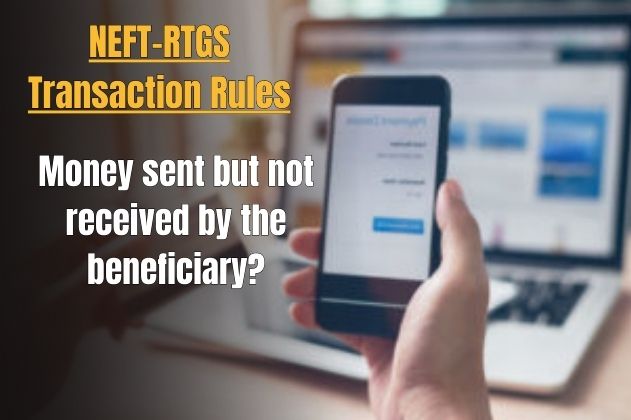NEFT RTGS Transaction: Reserve Bank of India provides many channels for online money transfer in the country, such as NEFT, RTGS and IMPS. IMPS and NEFT are most commonly used for small amounts, while RTGS is used for high-value transactions.
But sometimes customers also face such a situation that it fails on doing NETF or RTGS or any kind of money transaction from their account. Money does not reach the beneficiary’s account after the transfer. So what to do in such a situation? Let’s know the rules.
What if NEFT transaction fails?
In NEFT or National Electronic Fund Transfer, it usually takes 15 minutes for the money to arrive in the beneficiary’s account. In some cases it may take longer than this. Enough is enough, the beneficiary can get the money in two hours. But if there is something wrong then the money may not be credited at all. It is possible that the customer has wrongly entered the account number and other details of the beneficiary. If the details are not wrong and still the money has not arrived, then you can wait for some time and see. In these cases, either the money comes within two hours or the bank returns the money to your account. If this does not happen then you should go to the bank.
Will the bank pay the fine?
According to RBI rules, if the beneficiary’s account is not credited within two hours of the transaction, or the money is not returned to the sender’s account, then the bank has to pay a penalty. Without waiting whether the customer lodges a complaint on his behalf or not, the bank has to pay a penalty of 2% to the customer’s account for the number of days the bank is late with the RBI’s LAF (Liquidity Adjustment Facility) Repo Rate. Right now the LAF Repo Rate is running at 6.50%. On adding 2% to this, the bank will have to pay a penalty of 8.50%.
What if RTGS transaction failed?
Almost the same rules apply for this type of transaction. Usually, after the transfer is completed from the sender’s bank account, the money is transferred to the beneficiary’s account in real time.
The beneficiary bank has to credit the amount to the beneficiary’s account within the next 30 minutes and send the message, but in case the beneficiary does not receive the amount, the beneficiary bank will either credit the amount within 1 hour of receiving the transaction receipt on the payment interface Money has to be sent to the sender’s bank within or before the end of the RTGS business day, after which the bank sends it back to his account. Here also the bank has to pay the penalty. On adding 2 percent to the 6.50% LAF Repo Rate, the bank will have to pay a penalty of 8.50%.
What if the details of the beneficiary were wrongly given?
If the customer had given wrong account details of the beneficiary, then he can put a written application in the bank regarding this and ask for cancellation of the transaction. You are not trapped in such a situation, for this it is necessary to check the account number and other details very well while doing the transaction.













